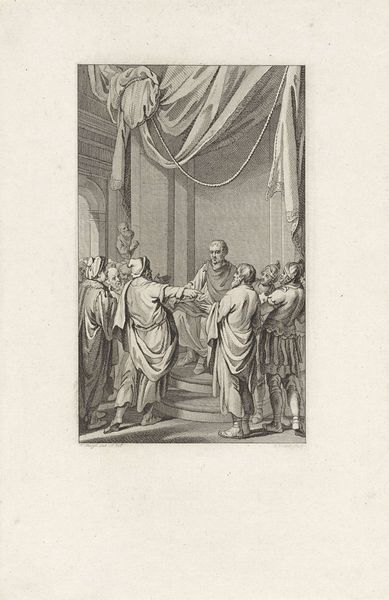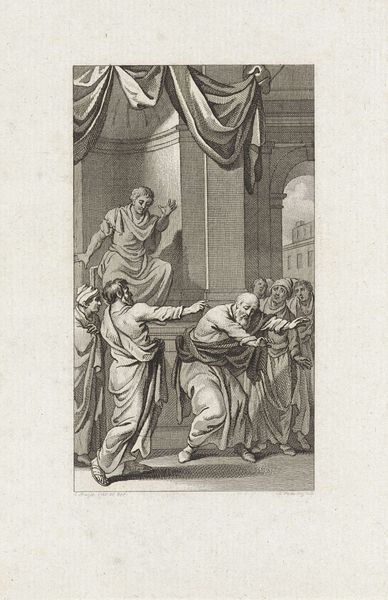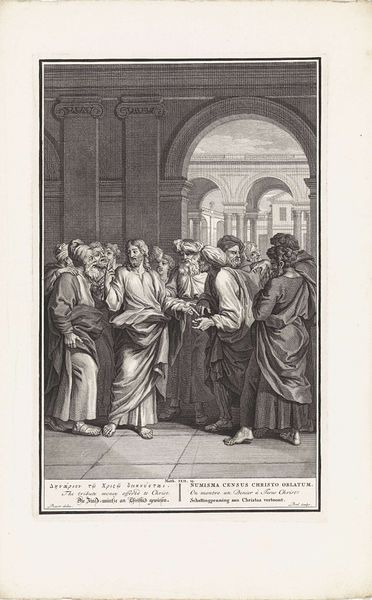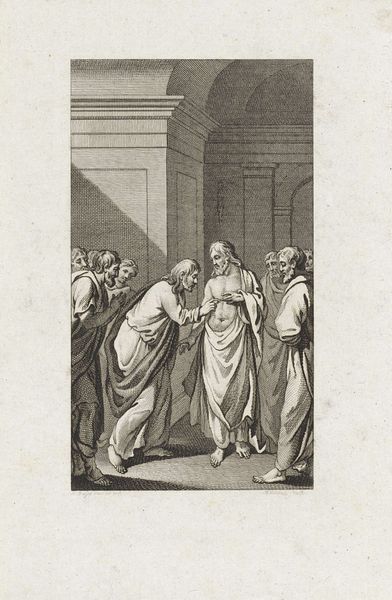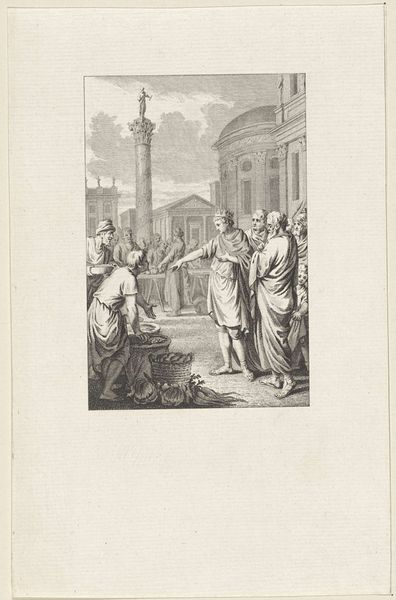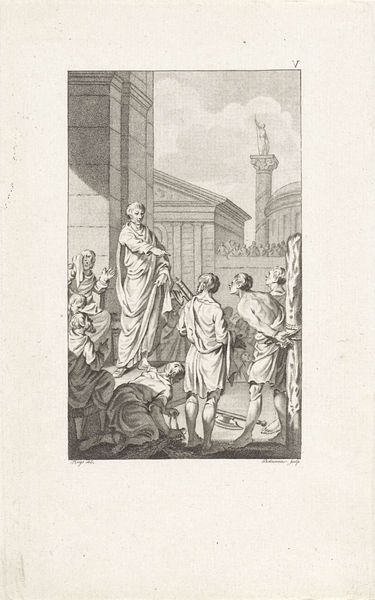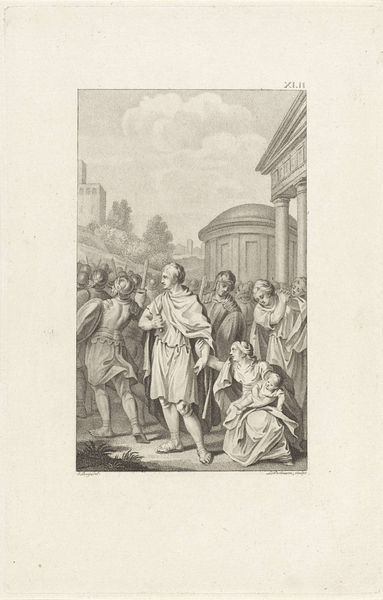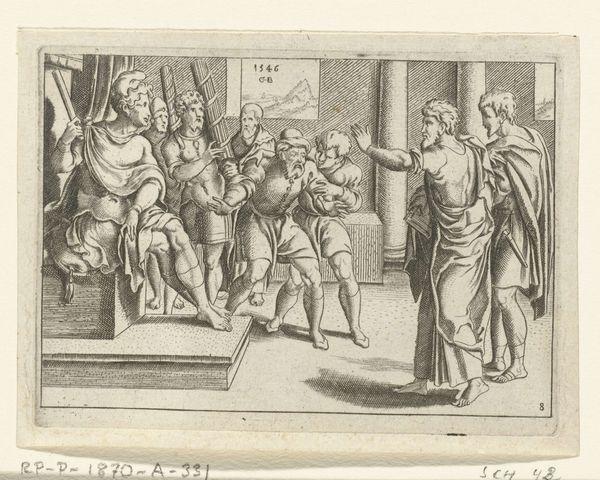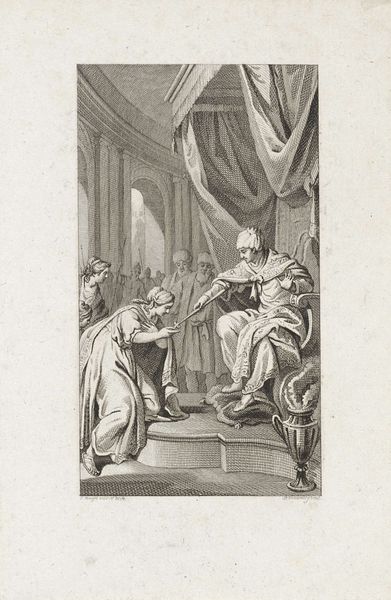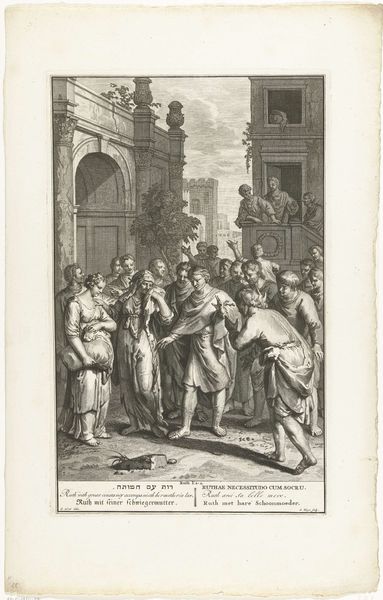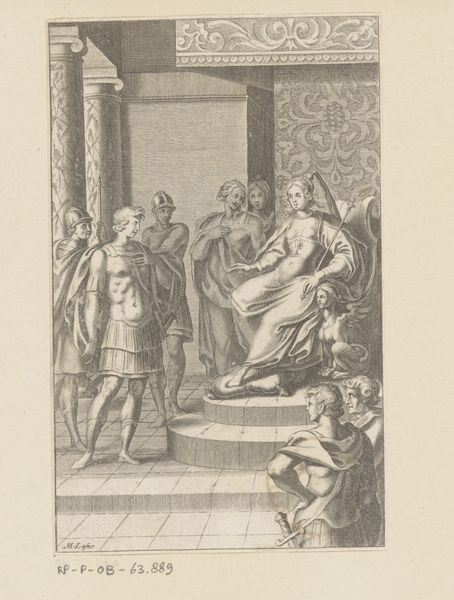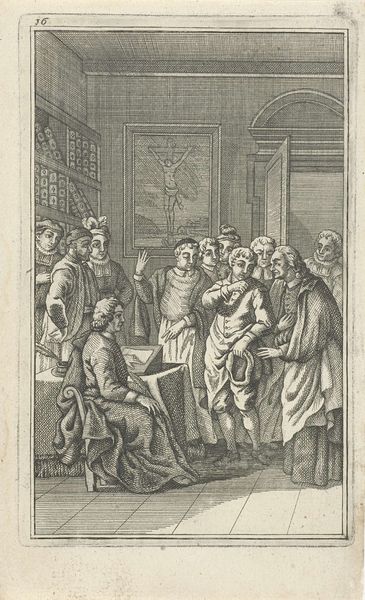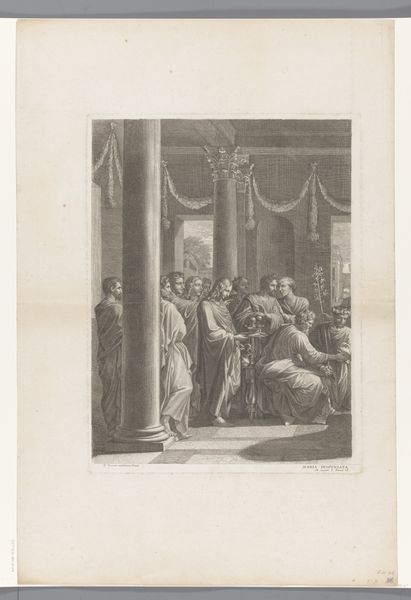
drawing, print, etching
#
portrait
#
drawing
#
neoclacissism
#
narrative-art
# print
#
etching
#
pencil sketch
#
classical-realism
#
perspective
#
figuration
#
form
#
classicism
#
group-portraits
#
line
#
history-painting
#
academic-art
Dimensions: height 221 mm, width 135 mm
Copyright: Rijks Museum: Open Domain
Editor: We're looking at "Quintus Fabius Maximus before the Council in Carthage," an etching by Ludwig Gottlieb Portman from 1795. It depicts a tense meeting, all straight lines and solemn faces. What strikes me is the almost eerie quietude – like a photograph capturing a pregnant pause in a dramatic play. How do you interpret this work? Curator: The quiet you sense is exquisite! It's a very staged drama, isn’t it? Like a perfectly posed tableau vivant. Portman, working in the Neoclassical style, loved to freeze-frame moments of high moral import, pulling them from Roman history books. But notice how the lines aren’t just lines; they're almost like breaths, carefully controlled and released to create that weighty atmosphere. Do you sense the contrast between the stark architecture and the soft draping of the robes? Editor: I do. The folds in the togas almost seem to soften the rigidity. And that makes sense, right? To balance the harshness of the scene? Curator: Precisely! Portman creates tension with it. Think of the story he is trying to portray! Quintus Fabius Maximus’s negotiating with the Carthaginians – it's all about appearances, veiled threats, power plays behind serene expressions. The whole scene practically vibrates with unspoken conflict. Notice the details too, like the object offered. It has weight in its drapery. The whole rendering whispers, "This could go either way." How does the print make you feel about Quintus's position? Editor: I guess I hadn’t considered it a negotiation, but more as some kind of speech. The atmosphere suddenly feels more precarious. Thanks! I’ll have to look into Roman history more closely. Curator: Indeed! I wonder how many viewers recognize the subject matter today... Without understanding what’s at stake, we still sense there *is* something crucial happening. And perhaps, isn't that what timeless art achieves—a primal human recognition beyond the specific narrative?
Comments
No comments
Be the first to comment and join the conversation on the ultimate creative platform.
